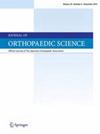影响腰椎椎体间融合术治疗退行性腰椎疾病后椎笼后退的危险因素:一项全面的系统回顾和荟萃分析。
IF 1.4
4区 医学
Q3 ORTHOPEDICS
引用次数: 0
摘要
背景:退行性腰椎疾病(dld)通常对患者的生活质量有显著影响,特别是腰椎椎体间融合术(LIF)后发生椎笼后退(CR)时。在这项研究中,我们进行了一项荟萃分析,以评估与LIF后CR相关的危险因素。方法:从7个数据库中检索相关文献,分析LIF术后发生CR的相关危险因素。我们检查了基线特征、诊断、合并症、融合水平、手术状态、影像学评估和笼状态,以确定潜在的危险因素。结果:16项研究共8059例患者(CR组251例,非CR组7808例)纳入最终分析。CR的发生率为3.15%。结果显示:年龄较大(平均差异[MD]: 2.35[0.44, 4.26]),融合程度较高(MD: 0.64[0.03, 1.25]),合并症-骨关节炎(风险比[RR]: 2.02[1.37, 2.98]),合并症-心脏病(RR: 2.95[1.21, 7.21]),合并症-存在椎体骨折(RR: 5.12[2.52, 10.39]),终板损伤(RR: 2.93[1.71, 5.02]),螺钉松动(RR: 6.03[1.90, 19.12]),梨形椎间盘(PSD, RR: 3.14[1.46, 6.74]),椎间盘平均高度较大(MDH, MD:1.65[0.58, 2.72])、较大的cobb角(MD: 0.68[0.10, 1.27]度)、较大的笼高(MD: 0.31[0.01, 0.61])和笼型碳(RR: 1.62[1.16, 2.27])是LIF后发生CR的危险因素。CR的发生率随融合程度的增加而降低。结论:年龄、终板损伤、PSD和其他9个因素被确定为LIF后CR的危险因素。有这些因素的患者在随访期间应密切监测,以防止严重的并发症,如明显的笼移位。本文章由计算机程序翻译,如有差异,请以英文原文为准。
Risk factors influencing cage retropulsion following lumbar interbody fusion in treating degenerative lumbar diseases: A comprehensive systematic review and meta-analysis
Background
Degenerative lumbar diseases (DLDs) often have significant impacts on patients' quality of life, particularly when cage retropulsion (CR) occurs following lumbar interbody fusion (LIF). In this study, we conducted a meta-analysis to assess the risk factors associated with CR after LIF.
Methods
We retrieved literatures analyzing the risk factors associated with CR following LIF from seven databases. We examined baseline characteristics, diagnosis, comorbidity, fusion level, surgical status, imaging assessment, and cage status to identify potential risk factors.
Results
Sixteen studies involving 8059 patients (251 in the CR group and 7808 in the Non-CR group) were included in the final analysis. The incidence of CR was 3.15 %. Results revealed that older age (mean difference [MD]: 2.35 [0.44, 4.26]), more fusion levels (MD: 0.64 [0.03, 1.25]), comorbidity-osteoarthritis (risk ratio [RR]: 2.02 [1.37, 2.98]), comorbidity-heart disease (RR: 2.95 [1.21, 7.21]), comorbidity-existing vertebral fracture (RR: 5.12 [2.52, 10.39]), endplate injury (RR: 2.93 [1.71, 5.02]), screw loosening (RR: 6.03 [1.90, 19.12]), pear-shaped disc (PSD, RR: 3.14 [1.46, 6.74]), greater mean disc height (MDH, MD: 1.65 [0.58, 2.72]), larger cobb angle (MD: 0.68 [0.10, 1.27] degrees), larger cage height (MD: 0.31 [0.01, 0.61]), and cage type-carbon (RR: 1.62 [1.16, 2.27]) were identified as risk factors for CR following LIF. The incidence of CR decreased with an increase in fusion level.
Conclusions
Older age, endplate injury, PSD, and nine other factors are identified as risk factors for CR following LIF. Patients with these factors should undergo close monitoring during follow-up to prevent serious complications, such as significant cage displacement.
求助全文
通过发布文献求助,成功后即可免费获取论文全文。
去求助
来源期刊

Journal of Orthopaedic Science
医学-整形外科
CiteScore
3.00
自引率
0.00%
发文量
290
审稿时长
90 days
期刊介绍:
The Journal of Orthopaedic Science is the official peer-reviewed journal of the Japanese Orthopaedic Association. The journal publishes the latest researches and topical debates in all fields of clinical and experimental orthopaedics, including musculoskeletal medicine, sports medicine, locomotive syndrome, trauma, paediatrics, oncology and biomaterials, as well as basic researches.
 求助内容:
求助内容: 应助结果提醒方式:
应助结果提醒方式:


